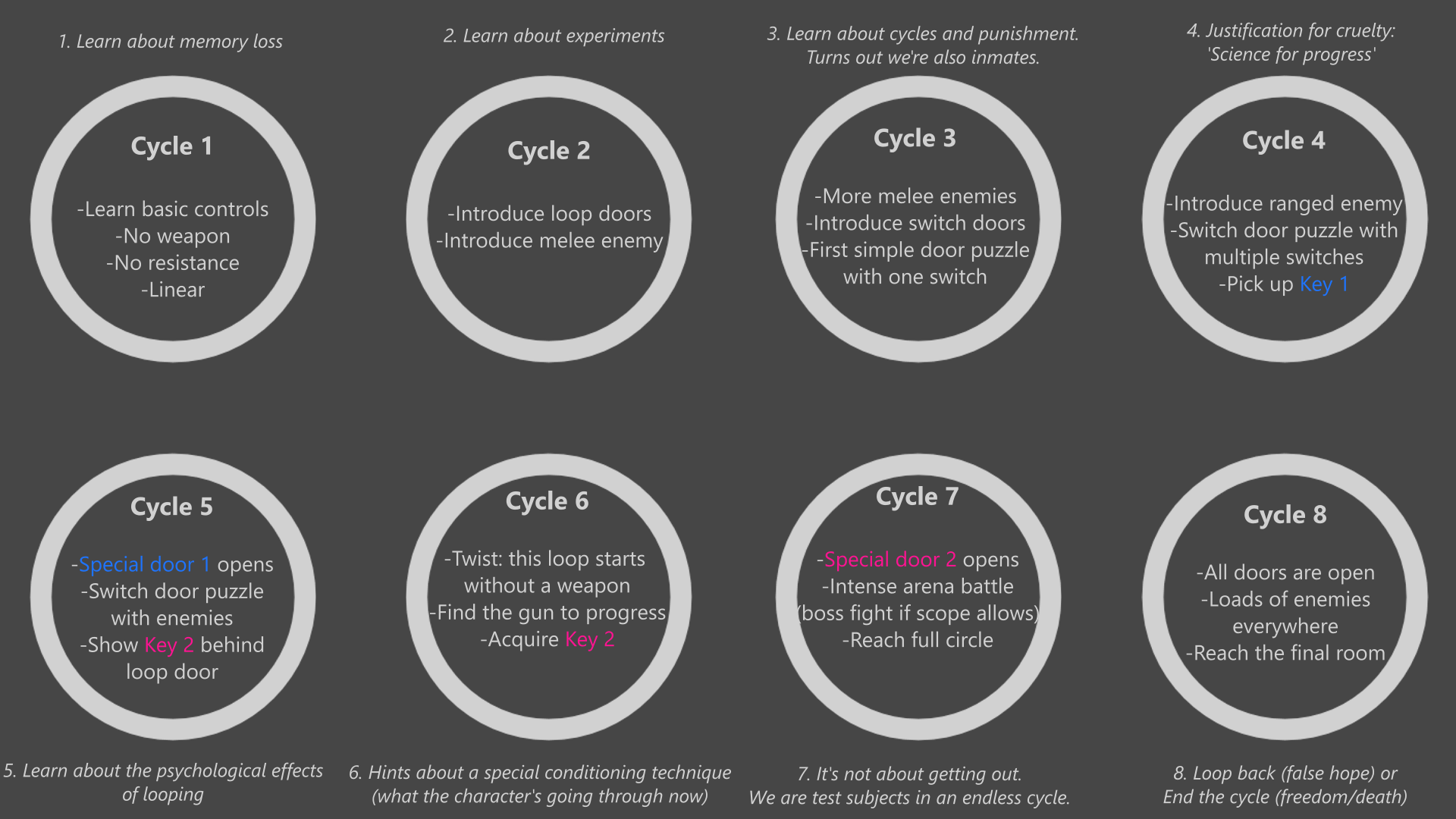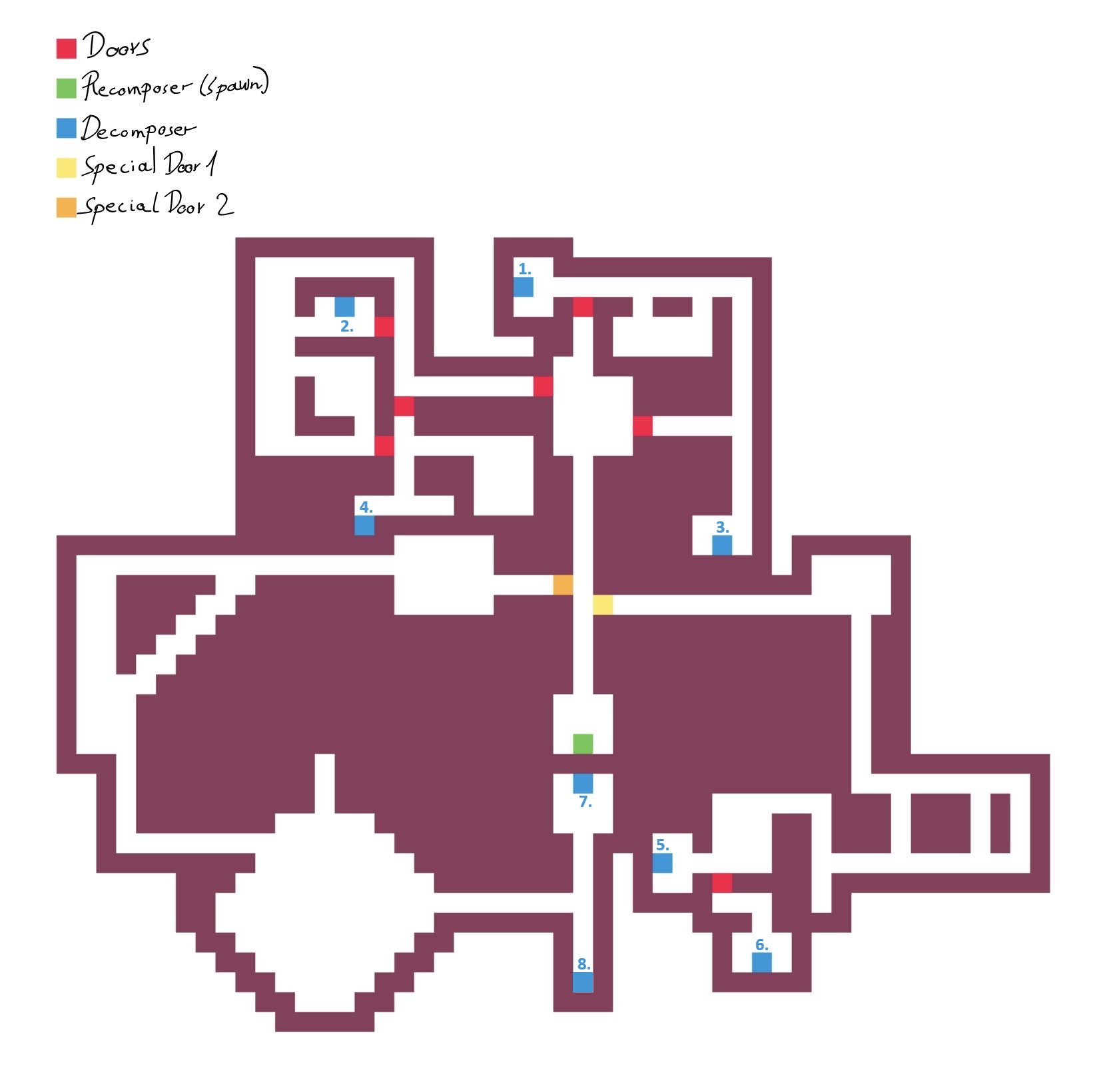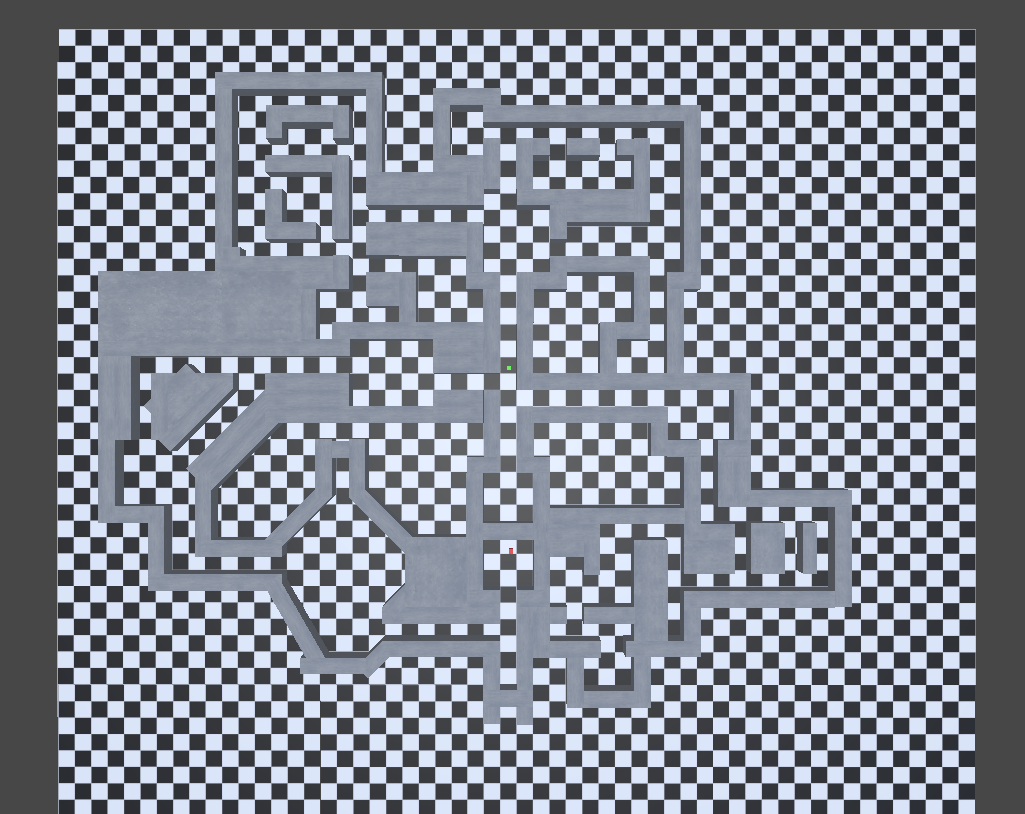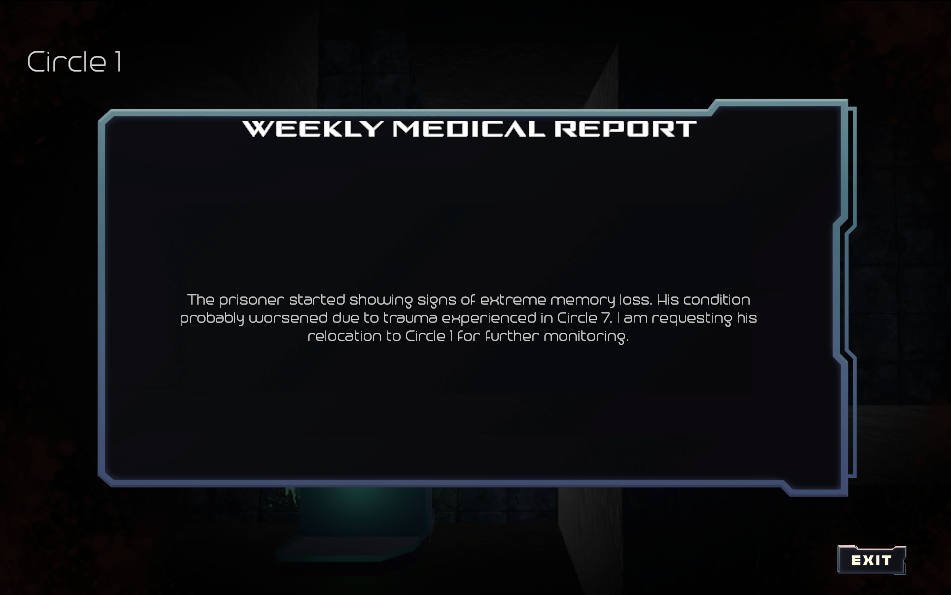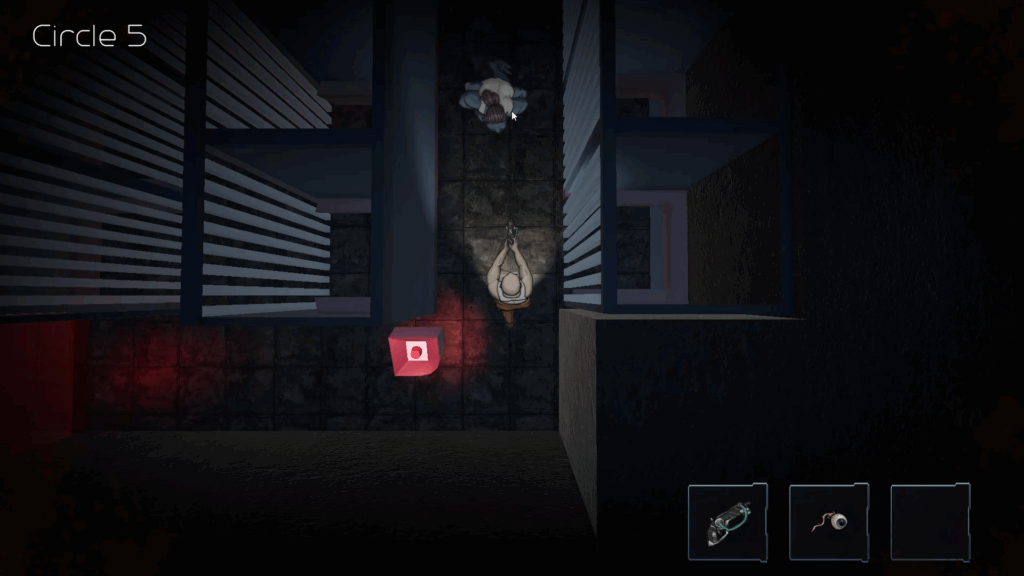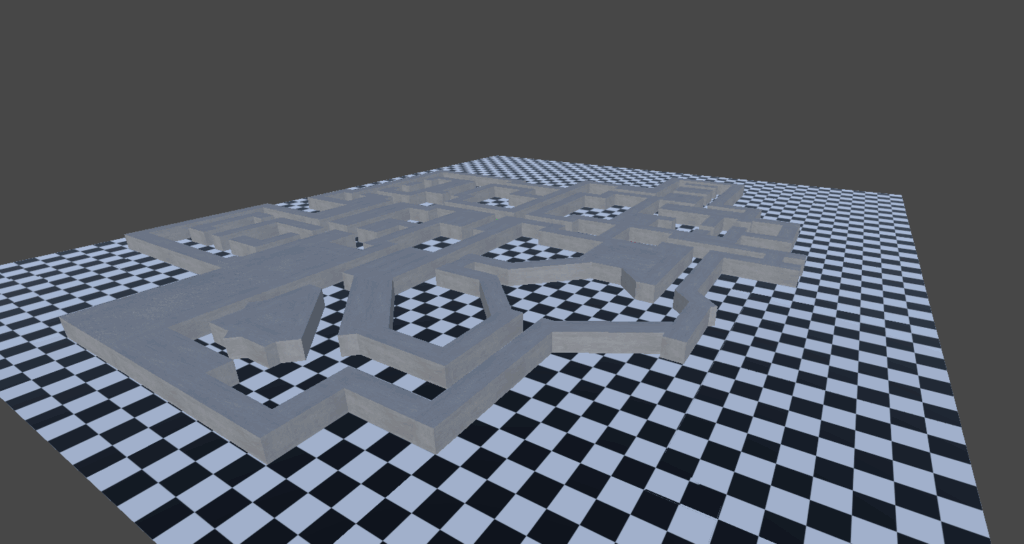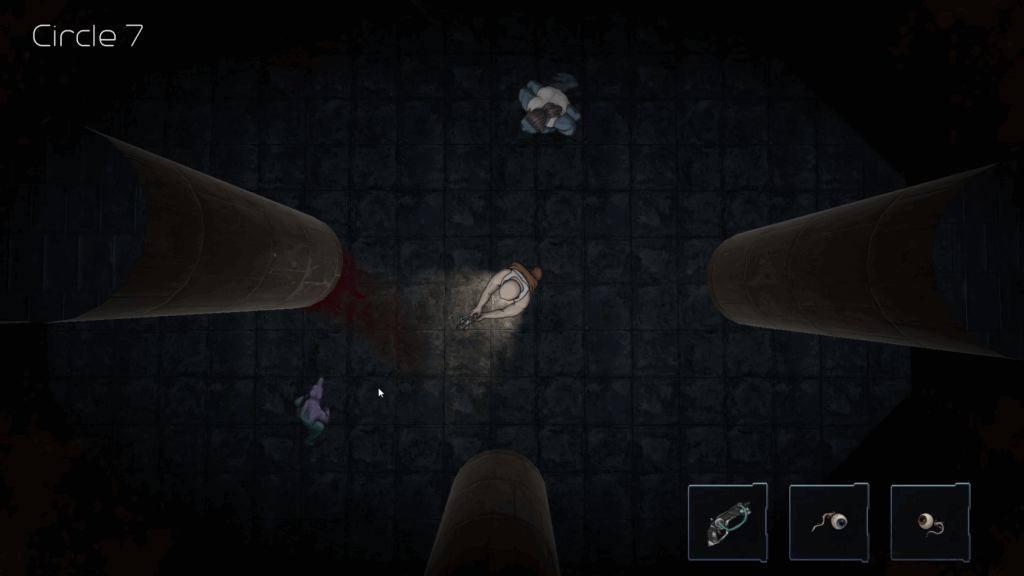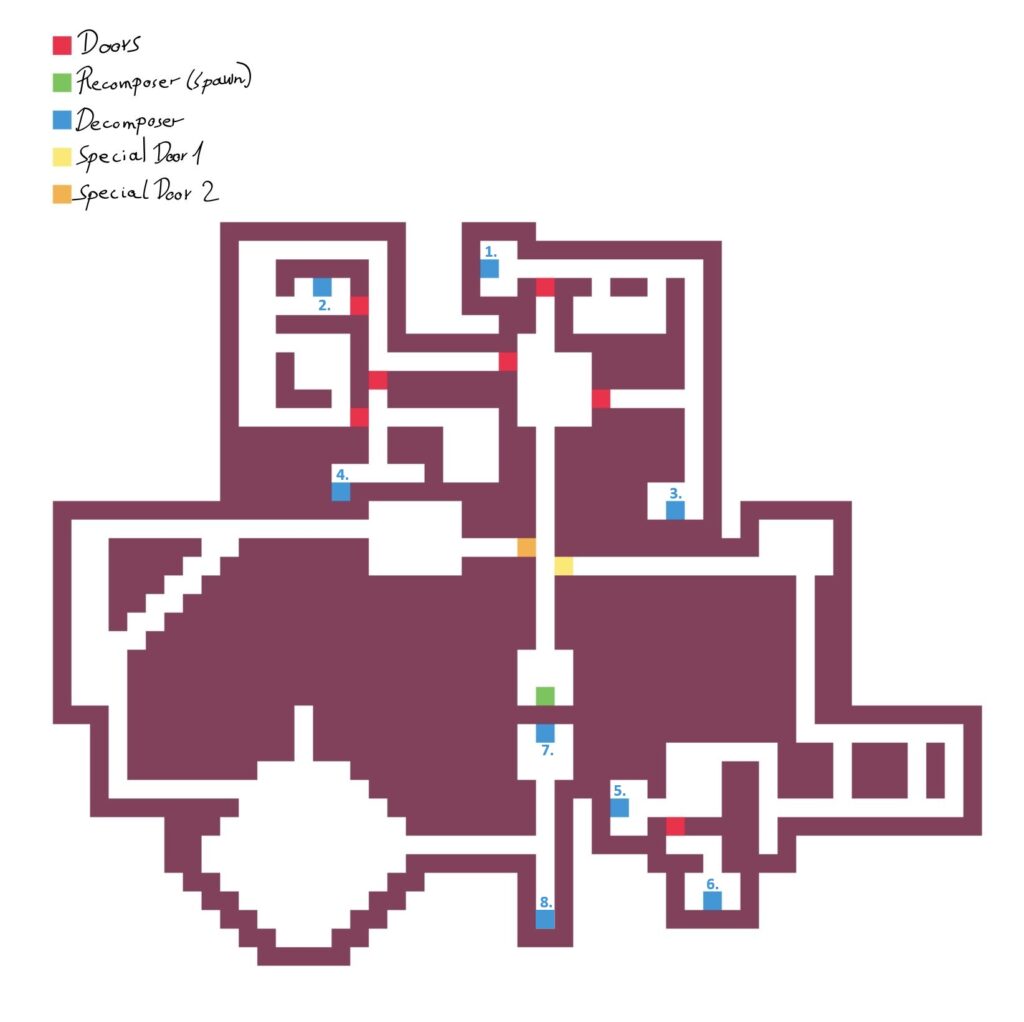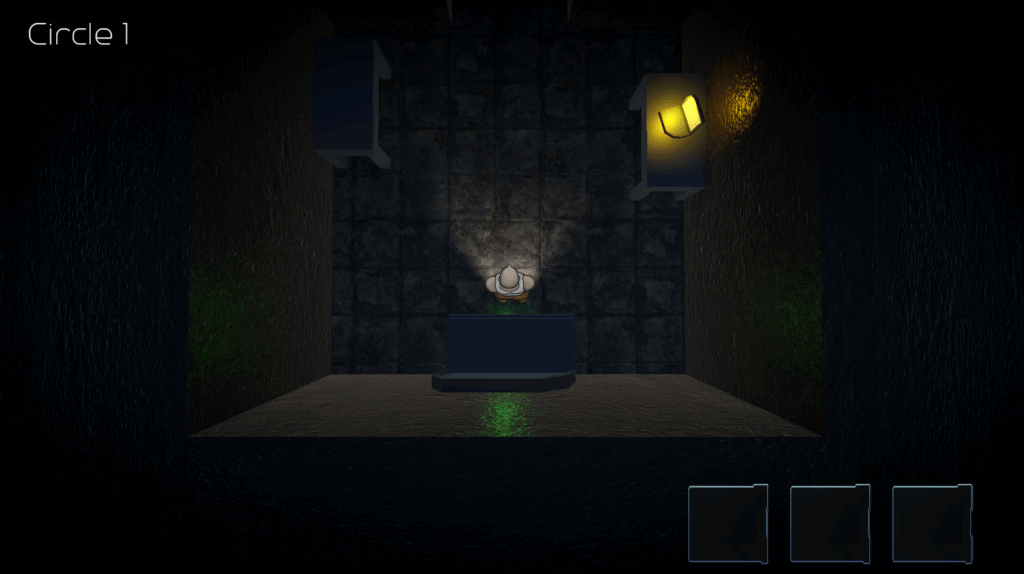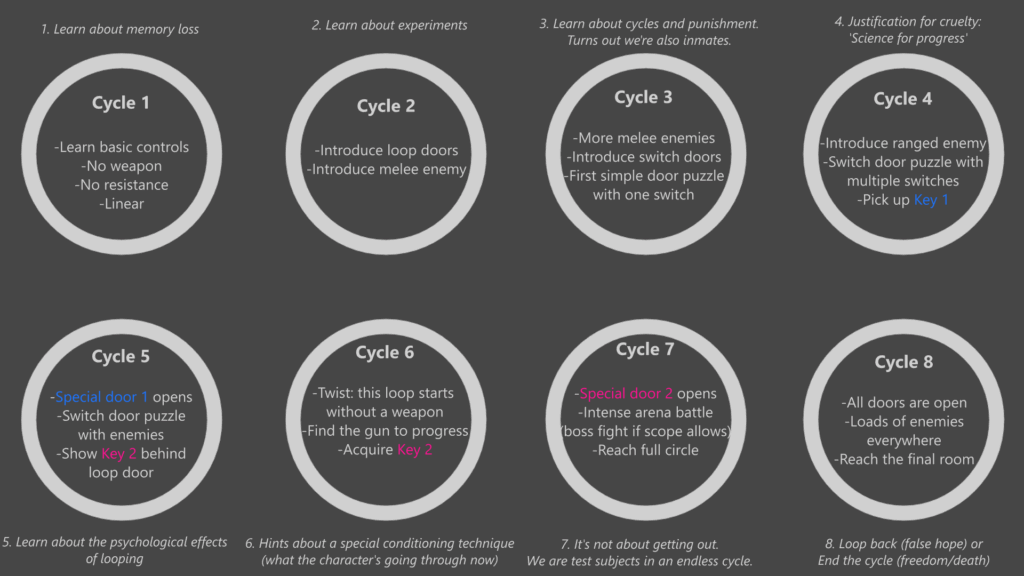Main Role:
Game designer & 3D artist
Team Distribution:
1 Game Designer & 3D artist
1 Programmer
1 Sprite Artist
1 Audio Designer
Project Duration:
5 days
~8 hours/day
(approx. 40 hours in total)
Tools Used:
Unity 6
Blender
Overview
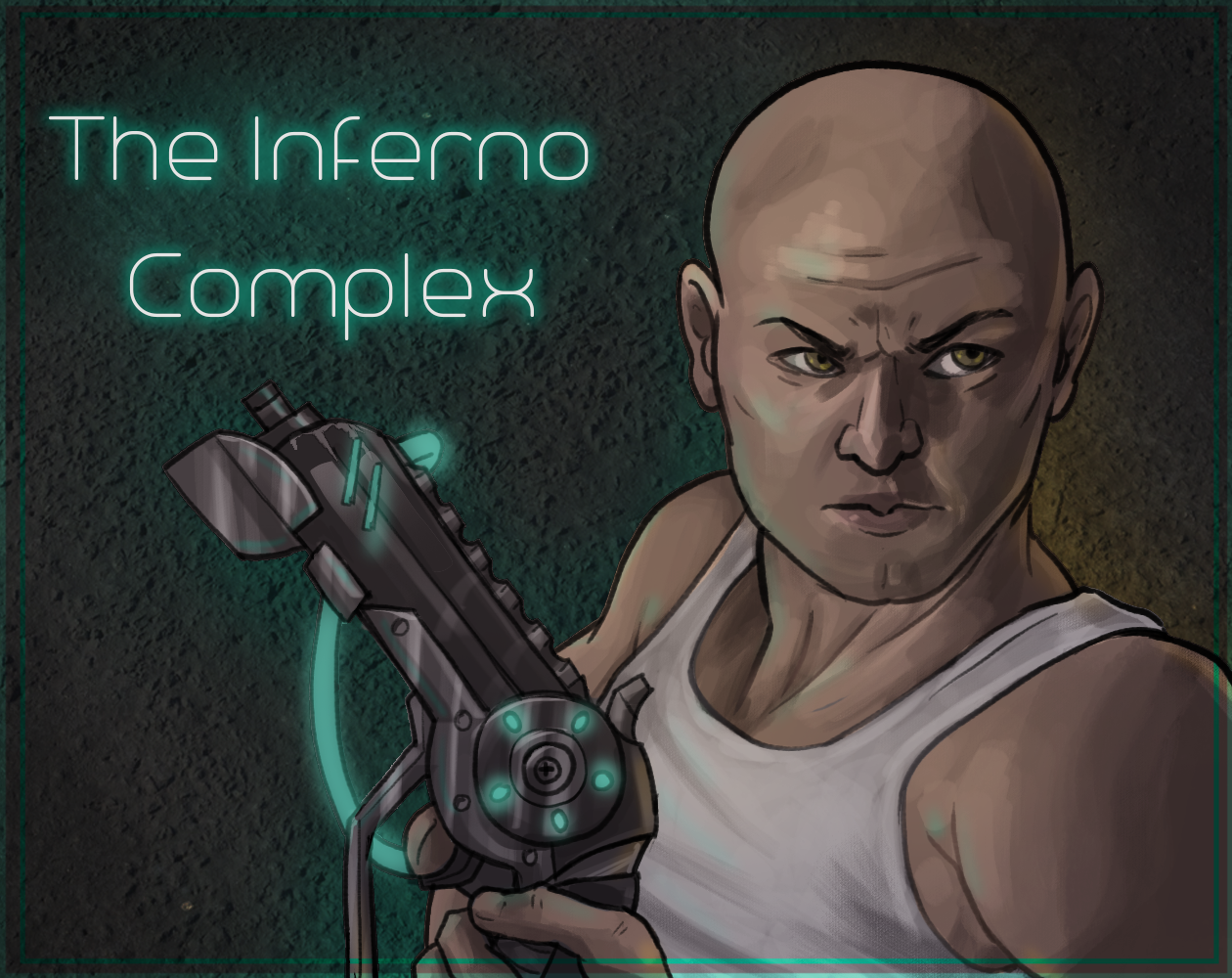
The Inferno Complex is a top-down shooter created for GMTK Game Jam 2025. The theme was “Loop”, and the game represents it both mechanically (repeating environments with changing conditions) and narratively (getting through circles of a prison facility).
My role as the designer was to take the core idea and turn it into a cohesive level structure, progression system, and narrative framework, all while staying within the limits of the scope.
Concept Development
I wanted to experiment with reusing the same level while changing how it operates each loop. This introduced both design opportunities and challenges. It was important that progression felt logical without relying on randomness. My solution was a fixed spawn point and an alternating goal for each loop. I also came up with a door system with different rules for each door type:
-
-
Loop Doors: consistently change between open/closed state every cycle, forcing players to learn and adapt.
-
Switch Doors: linked to a global switch mechanic, used for puzzles.
-
Special Doors: require keys to unlock to mix up the familiar environment and allow for fresh late-game challenges.
-
This system allowed me to work with a consistent ruleset that I could scale across multiple loops, so I had both predictability and variety.
Level Design Process
Designing for eight interconnected loops meant traditional mockups wouldn’t work and the spatial overlaps made early prototyping quite difficult. To solve this I created a beat map ignoring loops and space, focusing only on pacing, progression and key moments.
Then based on the beat map, I drafted out a level by making small adjustments to it with each new loop. By prioritizing the requirements of the current loop, I could keep updating the level draft witch each new loop, adding doors and puzzles eventually.
I placed special doors that requried keys near the starting area. These doors can’t be opened for many loops, but players pass by them repeatedly, so they work well as teasing and foreshadowing, until they can be opened later.
Originally, I planned for 9 loops as a reference to Dante’s Inferno, but I scaled it down to 8 to give the game a better flow.
Narrative Design
I felt philosophical, so I set the narrative theme as “Hope is a prison”. Story-wise the first thing I did was developing the setting of the game. The Inferno Complex was a corporate facility utilized as an artificial Hell for criminals, where scientists executed endless experimentation.
Progression: Each loop represented another circle of this artificial Hell. The most important story fragments were revealed through consoles placed near the end of loops, so they were unmissable unless ignored. Optional lore was hidden throughout the map to reward exploration.
Telling the story: I drafted a complete story arc, then fragmented it into documents written from different perspectives (scientists, operators, guards). My focus here was to add variety and wordlessness to the narrative.
Climax: Players eventually uncover the truth and face a choice at the end of the game: return to the loop (false hope) or end it forever (freedom/death). Having to choose at the end was a crucial part of the story, for that’s the gameplay representation of the narrative theme.
